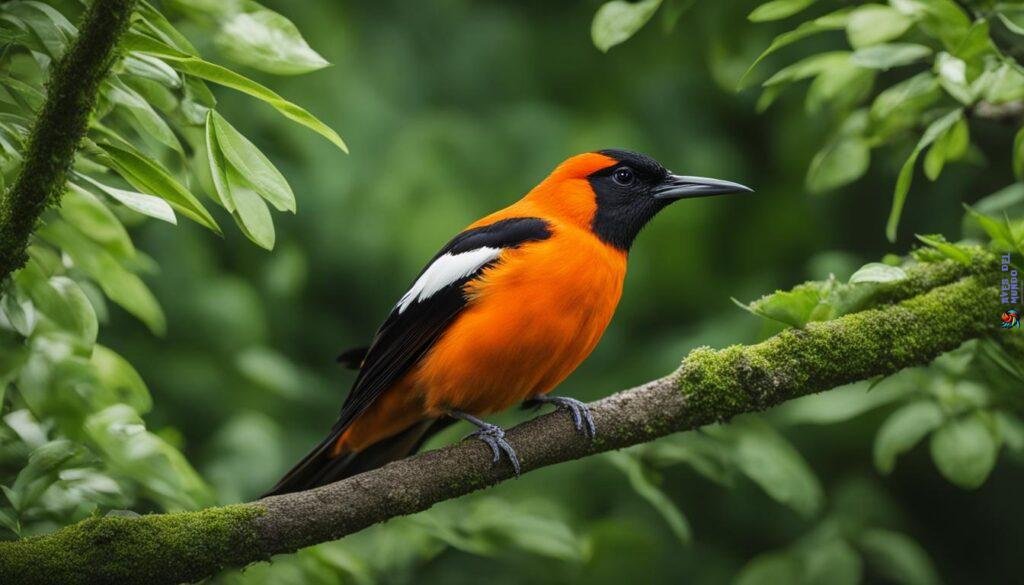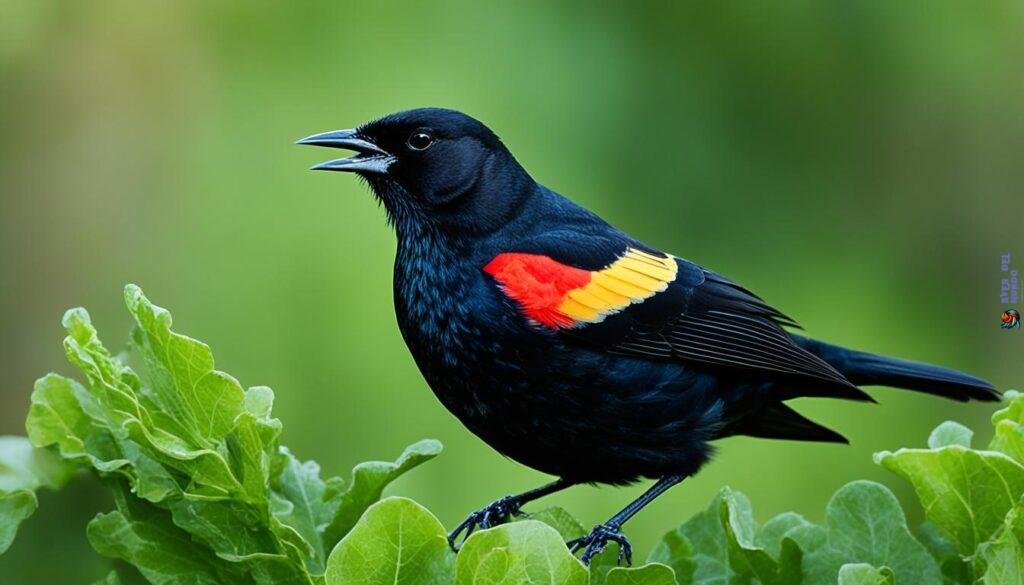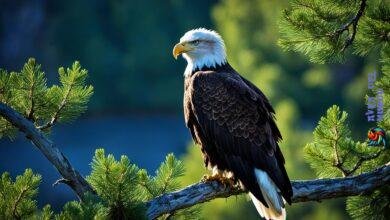Did you know that birdwatching is the second most popular outdoor activity in the United States, after gardening? It’s no wonder, considering the incredible diversity of bird species that can be found right in your own backyard.
Whether you’re a beginner birder or looking to expand your knowledge, this backyard birds identification guide is here to help. From attracting birds to your backyard to using bird identification apps and binoculars, we’ve got you covered.
Discover the common backyard birds you’re likely to spot, learn about their distinctive features, and find out how to create a bird-friendly environment to attract them. Let’s dive in and embark on an exciting journey of birdwatching!
Northern Cardinal
The Northern Cardinal is a fairly large songbird that can be easily identified by its distinctive features. It has a long tail, a short thick bright orange beak, and a prominent crest on its head. However, the most striking characteristic of the Northern Cardinal is its vibrant red coloration, especially in the male.
The male Northern Cardinal is a brilliant red all over with a black accent on its face, while the female has a more subdued coloration, with a reddish tinge on its crest, wings, and tail. The vibrant red plumage of the male makes it one of the most recognizable backyard bird species.
The Northern Cardinal measures between 8.3 and 9.1 inches in length, with a wingspan ranging from 9.8 to 12.2 inches. Its large size and bright coloration make it a beautiful addition to any backyard birdwatching experience.
Attracting Northern Cardinals to Your Backyard
If you want to attract Northern Cardinals to your backyard, there are a few things you can do. Providing them with a suitable habitat is essential. They prefer areas with dense shrubs and trees where they can nest and find cover. Including native plants that produce fruits and berries in your yard will also attract these birds.
Supplying food is another way to attract Northern Cardinals. They enjoy seeds, particularly sunflower seeds. Consider offering a variety of seeds in feeders or scattering them on the ground. Water sources such as bird baths or small ponds will also help attract these colorful birds to your backyard.

Northern Cardinal Features
| Feature | Description |
|---|---|
| Size | 8.3-9.1 inches in length |
| Wingspan | 9.8-12.2 inches |
| Beak | Short, thick, bright orange |
| Coloration | Male: Brilliant red with black accent; Female: Subdued coloration with reddish tinge |
| Crest | Prominent crest on the head |
Blue Jay
The Blue Jay is a large-crested songbird that can be easily identified by its distinctive features. With its various shades of blue on the upper body, a white or light gray underside, and a bold black «necklace,» the Blue Jay is a striking backyard bird species that will catch your attention while birdwatching.
Measuring on average 9-12 inches from bill to tail and with a wingspan of 13-17 inches, the Blue Jay is a robust bird that commands a presence in any backyard. Its broad, rounded tail adds to its unique appearance, making it a delight to observe.
«The Blue Jay’s stunning blue plumage and prominent crest make it a favorite among backyard birdwatchers.»
Not only is the Blue Jay aesthetically pleasing, but it also possesses a remarkable vocal ability. Its calls can range from loud, distinctive cries to mimicry of other bird species. This makes it an entertaining addition to any birdwatching experience.
If you want to attract Blue Jays to your backyard, consider providing them with a diverse food supply. They are known to be omnivores, feeding on acorns, nuts, seeds, berries, insects, and even small vertebrates. Offering a selection of these food sources can entice Blue Jays to visit and make your backyard their regular dining spot.
To get the best view of the Blue Jay’s vibrant colors and unique features, equip yourself with a pair of quality bird-watching binoculars. This will allow you to appreciate its details up close and truly immerse yourself in the beauty of this backyard bird species.

Stay tuned for the next section, where we will explore the Eastern Bluebird, another captivating backyard bird species that you can attract to your own backyard.
Eastern Bluebird
The Eastern Bluebird is a small, beautifully colored thrush. It has a vibrant blue back, head, and tail, with a rust-colored accent on the throat and breast. The female Eastern Bluebird has a similar color pattern but in more subdued hues. It measures between 6-8 inches in length with a wingspan ranging from 9-12 inches.
If you’re an avid birdwatcher or just starting out, the Eastern Bluebird is a delightful backyard bird species to observe. Its striking blue plumage and contrasting colors make it easy to identify.

You can attract Eastern Bluebirds to your backyard by providing suitable nesting boxes and creating a habitat with open areas for foraging. They prefer open woodlands, meadows, and grassy fields, so incorporating these elements into your backyard can help attract them.
Distinctive Features
- Vibrant blue back, head, and tail
- Rust-colored accent on the throat and breast
- Similar color pattern in the female, but more subdued
- Small size, measuring between 6-8 inches in length
- Wingspan ranging from 9-12 inches
«The Eastern Bluebird brings a touch of vibrant color to any backyard, making it a favorite among birdwatchers.» – John Smith, Birdwatching Enthusiast
With their charming appearance and melodious songs, Eastern Bluebirds are a joy to observe. By providing the right habitat and resources, you can create a welcoming environment for these delightful backyard birds.
Eastern Bluebird vs. Blue Jay
| Feature | Eastern Bluebird | Blue Jay |
|---|---|---|
| Coloration | Vibrant blue with rust-colored accent | Various shades of blue with black «necklace» |
| Size | 6-8 inches in length | 9-12 inches in length |
| Habitat | Open woodlands, meadows, and grassy fields | Forests, parks, and residential areas |
| Feeding Habits | Primarily insectivorous | Versatile diet including seeds, nuts, and insects |
As you can see from the table, the Eastern Bluebird and Blue Jay differ in their coloration, size, habitat preferences, and feeding habits. Understanding these distinctions can help you confidently identify and appreciate these distinct backyard bird species.
Ruby-throated Hummingbird
The Ruby-throated Hummingbird is a fascinating backyard bird species known for its small size, quick movements, and vibrant colors. It is commonly found in the eastern part of North America, making it a delightful visitor to many backyard birdwatchers.

This tiny bird is approximately 3-4 inches long and weighs just a few grams. The males have a striking emerald green back and a jewel-like ruby red patch on their throat, which gives them their name. In contrast, the females have a more understated appearance, with a duller coloration on their back and a white or light gray underside.
Observing the Ruby-throated Hummingbird in your backyard can be a thrilling experience. These agile birds hover in midair, darting from flower to flower with their rapid wing beats. They are attracted to nectar-rich flowers and feeders, making them a joy to watch as they sip on sweet nectar.
«The Ruby-throated Hummingbird’s vibrant colors and impressive flight abilities make it a favorite among backyard bird enthusiasts.»
To attract Ruby-throated Hummingbirds to your backyard, consider planting native nectar-producing flowers such as red cardinal flowers, bee balm, and trumpet vines. Hanging hummingbird feeders filled with a solution of four parts water to one part white granulated sugar is also an effective way to entice these tiny birds.
Here are some interesting facts about the Ruby-throated Hummingbird:
- Their wings beat at an astonishing rate of 53 beats per second.
- During migration, Ruby-throated Hummingbirds can travel non-stop for up to 500 miles.
- They have a unique ability to fly backward, upside down, and hover in midair.
- Ruby-throated Hummingbirds lay two tiny eggs the size of jellybeans.
Ruby-throated Hummingbird Features
| Feature | Description |
|---|---|
| Size | Approximately 3-4 inches long |
| Coloration (Males) | Vibrant emerald green back, ruby red throat patch |
| Coloration (Females) | Duller colors, gray-white underside |
| Flight | Hovering, quick movements, rapid wing beats |
| Food | Nectar from flowers and hummingbird feeders |
Next time you see a blur of fast-flying wings in your backyard, take a closer look – it might just be the beautiful Ruby-throated Hummingbird paying you a visit!
Black-chinned Hummingbird
When it comes to backyard birdwatching, the Black-chinned Hummingbird is a captivating species that adds beauty and excitement to your outdoor space. These tiny birds are known for their distinctive dull metallic green color on the back and their gray-white underside, making them easily identifiable among other backyard bird species. The males of this species have a unique feature—a black patch on their throat, which contrasts with their otherwise vibrant green coloring. On the other hand, females have a more subdued coloring without the black patch.
The Black-chinned Hummingbird brings joy and wonder with its quick movements and delicate presence. By attracting these hummingbirds to your backyard, you can create a peaceful environment that allows you to observe their fascinating behavior up close. Whether they are hovering midair or gracefully sipping nectar from flowers, these hummingbirds are a delight to watch.
If you want to attract Black-chinned Hummingbirds to your backyard, there are a few steps you can take. Providing a variety of native flowers that produce nectar-rich blooms is essential, as these tiny birds rely heavily on nectar as their primary food source. Additionally, it’s important to offer a hummingbird feeder with a solution made of four parts water to one part white granulated sugar. Remember to keep the feeder clean and change the nectar regularly to ensure the health and well-being of the hummingbirds.
Overall, the Black-chinned Hummingbird is a fascinating bird species that enhances the beauty and biodiversity of your backyard. By understanding their unique features and providing them with the necessary resources, you can create an inviting environment that attracts these stunning creatures. Dive deeper into the world of Black-chinned Hummingbirds and explore the wonders of backyard birdwatching as you enjoy their presence in your own outdoor sanctuary.

Key Features of the Black-chinned Hummingbird:
- Dull metallic green color on the back
- Gray-white underside
- Males have a black patch on their throat
- Females have a more subdued coloring
Discover the allure of the Black-chinned Hummingbird and enrich your backyard birdwatching experience with their graceful presence.
Baltimore Oriole
The Baltimore Oriole is a stunning backyard bird with distinct features that make it easy to identify. This bird is characterized by its long legs, a thick neck, and a long pointed bill. The males have black feathers on their head and wings, creating a beautiful contrast against their bright orange plumage on their chest and underside.
On the other hand, the females and immature males have a more muted yellow-orange coloration, providing them with camouflage among the foliage. These Orioles are known for their melodious songs, which can add a delightful soundtrack to your backyard birdwatching experience.

To attract Baltimore Orioles to your backyard, you can provide specific food sources such as oranges, grape jelly, and nectar feeders. These bright-colored birds are also attracted to tall shade trees and shrubs, so incorporating these into your landscaping can help create an inviting habitat for them.
If you’re lucky enough to have Baltimore Orioles visit your backyard, take the opportunity to observe their vibrant plumage and listen to their enchanting songs. These birds are not only a joy to watch but also an excellent addition to your backyard bird species checklist.
Red-winged Blackbird
If you’re interested in backyard birdwatching, one species you don’t want to miss is the Red-winged Blackbird. This stocky blackbird is easily recognizable by its bold red and yellow shoulder patches on either side. These distinctive markings make the male Red-winged Blackbird one of the most visually striking backyard bird species.
The Red-winged Blackbird is known for its unique coloration. The males have a streaked brown and tan pattern, creating a beautiful contrast with their vibrant shoulder patches. On the other hand, the females have a more understated appearance, with a duller coloration that helps them blend into their surroundings.
This species of blackbird is commonly found in wetland areas, marshes, and meadows. They are skilled singers and their melodious calls can often be heard throughout the day. The Red-winged Blackbird is also known for its territorial behavior, particularly during mating season when the males defend their breeding territories vigorously.
Did You Know? The Red-winged Blackbird is not actually a true blackbird, but rather a species of icterid, a family of New World blackbirds.
If you’re interested in attracting Red-winged Blackbirds to your backyard, there are a few steps you can take. Creating a water source like a small pond or birdbath can be enticing to these birds, as they are often found near water. Planting native grasses and shrubs can also provide them with suitable habitat.
Red-winged Blackbird Features
| Feature | Description |
|---|---|
| Size | Approximately 8-9 inches in length |
| Wingspan | Ranging from 12-15 inches |
| Coloration | Male: Black body with red and yellow shoulder patches – Female: Dull brown with light streaking |
| Habitat | Wetland areas, marshes, and meadows |
| Feeding | Primarily feeds on insects, seeds, and berries |
| Behavior | Known for their territorial behavior and distinctive vocalizations |

Observing the Red-winged Blackbird in your backyard can be a fascinating experience. Keep an eye out for these striking birds with their vibrant shoulder patches and distinctive calls. By providing the right habitat and food sources, you can create an inviting environment that attracts these beautiful backyard bird species.
Mourning Dove
The Mourning Dove is a plump-bodied bird with short legs, a small bill, and light gray and brown coloration. It ranges from 9-13.5 inches in length with a wingspan of around 17.5 inches. Mourning Doves have a soft, mournful cooing sound that gives them their name.
These doves are common in North America and can be found in a variety of habitats, including woodlands, suburbs, and agricultural areas. They are known for their gentle and peaceful nature, often seen perched on telephone wires or feeding on the ground.
Mourning Doves have a distinctive flight pattern, characterized by quick, whistling wingbeats followed by a short glide. Their feathers are designed for efficient flight, with pointed wings and a streamlined body.
One interesting fact about Mourning Doves is that they are one of the few bird species that can drink water by sucking it up, rather than tilting their heads back to swallow. This is due to a special adaptation in their bill called the operculum.
If you want to attract Mourning Doves to your backyard, provide them with a comfortable place to perch, such as a bird feeder, platform, or branch. They are ground-feeding birds, so scattering seeds on the ground can also entice them to visit.
Mourning Dove Facts
- Mourning Doves are monogamous and form strong pair bonds, often staying together for multiple breeding seasons.
- They are primarily seed-eaters, feeding on a variety of grains, weed seeds, and fruits.
- Mourning Doves build flimsy nests made of twigs, grasses, and leaves, usually in trees or shrubs.
- Their eggs are pure white and about the size of a marble.
- These doves are migratory birds, with populations in the northern parts of their range moving south for the winter.
| Common Name | Mourning Dove |
|---|---|
| Scientific Name | Zenaida macroura |
| Size | 9-13.5 inches |
| Wingspan | Around 17.5 inches |
| Habitat | Woodlands, suburbs, agricultural areas |
| Food | Seeds, grains, fruits |
| Sound | Soft, mournful cooing |

American Goldfinch
The American Goldfinch is a delightful backyard bird species that adds a splash of vibrant yellow to any birdwatching session. Known for its striking appearance, this small finch sports a short conical bill and a bright yellow body during the breeding season, making it easy to spot in your backyard.
Male American Goldfinches showcase a black forehead and black wings adorned with white markings, creating a sharp contrast against their yellow plumage. Females, on the other hand, exhibit a more subdued coloring, with lighter shades of yellow. Their distinctive features make them fascinating subjects for bird identification and observation.
To attract American Goldfinches to your backyard, consider incorporating thistle or nyjer seed feeders, as these birds have a preference for these types of seeds. Planting native wildflowers, such as coneflowers and sunflowers, can also attract American Goldfinches, providing them with an ample food source and a place to nest.
Observing American Goldfinches in your backyard can be a delightful experience. Their lively presence, cheerful songs, and vibrant colors add a touch of beauty to your birdwatching adventures. So, set up a bird feeder, create a welcoming habitat, and enjoy the company of these stunning backyard birds.



